Macrolides versus placebo for chronic asthma
- PMID: 34807989
- PMCID: PMC8608382
- DOI: 10.1002/14651858.CD002997.pub5
Macrolides versus placebo for chronic asthma
Abstract
Background: Asthma is a chronic disease in which inflammation of the airways causes symptomatic wheezing, coughing and difficult breathing. Macrolides are antibiotics with antimicrobial and anti-inflammatory activities that have been explored for the long-term control of asthma symptoms.
Objectives: To assess the effects of macrolides compared with placebo for managing chronic asthma.
Search methods: We searched the Cochrane Airways Group Specialised Register up to March 2021. We also manually searched bibliographies of previously published reviews and conference proceedings and contacted study authors. We included records published in any language in the search.
Selection criteria: We included randomised controlled clinical trials (RCTs) involving both children and adults with asthma treated with macrolides versus placebo for four or more weeks. Primary outcomes were exacerbation requiring hospitalisation, severe exacerbations (exacerbations requiring emergency department (ED) visits or systemic steroids, or both), symptom scales, asthma control questionnaire (ACQ, score from 0 totally controlled, to 6 severely uncontrolled), Asthma Quality of Life Questionnaire (AQLQ, with score from 1 to 7 with higher scores indicating better QoL), rescue medication puffs per day, morning and evening peak expiratory flow (PEF; litres per minutes), forced expiratory volume in one second (FEV1; litres), bronchial hyperresponsiveness, and oral corticosteroid dose. Secondary outcomes were adverse events (including mortality), withdrawal, blood eosinophils, sputum eosinophils, eosinophil cationic protein (ECP) in serum, and ECP in sputum.
Data collection and analysis: Two review authors independently examined all records identified in the searches then reviewed the full text of all potentially relevant articles before extracting data in duplicate from all included studies. As per protocol, we used a fixed-effect model. We conducted a sensitivity analysis for analyses with high heterogeneity (I2 greater than 30%). GRADE was used to assess the certainty of the body of evidence.
Main results: Twenty-five studies met the inclusion criteria, randomising 1973 participants to receive macrolide or placebo for at least four weeks. Most of the included studies reported data from adults (mean age 21 to 61 years) with persistent or severe asthma, while four studies included children. All participants were recruited in outpatient settings. Inclusion criteria, interventions and outcomes were highly variable. The evidence suggests macrolides probably deliver a moderately sized reduction in exacerbations requiring hospitalisations compared to placebo (odds ratio (OR) 0.47, 95% confidence interval (CI) 0.20 to 1.12; studies = 2, participants = 529; moderate-certainty evidence). Macrolides probably reduce exacerbations requiring ED visits and/or treatment with systemic steroids (rate ratio (RaR) 0.65, 95% CI 0.53 to 0.80; studies = 4, participants = 640; moderate-certainty evidence). Macrolides may reduce symptoms (as measured on symptom scales) (standardised mean difference (SMD) -0.46, 95% CI -0.81 to -0.11; studies = 4, participants = 136 ; very low-certainty evidence). Macrolides may result in a little improvement in ACQ (SMD -0.17, 95% CI -0.31 to -0.03; studies = 5, participants = 773; low-certainty evidence). Macrolides may have little to no effect on AQLQ (mean difference (MD) 0.24, 95% CI 0.12 to 0.35; studies = 6, participants = 802; very low-certainty evidence). For both the ACQ and the AQLQ the suggested effect of macrolides versus placebo did not reach a minimal clinically important difference (MCID, 0.5 for ACQ and AQLQ) (ACQ: low-certainty evidence; AQLQ: very low-certainty evidence). Due to high heterogeneity (I2 > 30%), we conducted sensitivity analyses on the above results, which reduced the size of the suggested effects by reducing the weighting on the large, high quality studies. Macrolides may result in a small effect compared to placebo in reducing need for rescue medication (MD -0.43 puffs/day, 95% CI -0.81 to -0.04; studies = 4, participants = 314; low-certainty evidence). Macrolides may increase FEV1, but the effect is almost certainly below a level discernible to patients (MD 0.04 L, 95% CI 0 to 0.08; studies = 10, participants = 1046; low-certainty evidence). It was not possible to pool outcomes for non-specific bronchial hyperresponsiveness or lowest tolerated oral corticosteroid dose (in people requiring oral corticosteroids at baseline). There was no evidence of a difference in severe adverse events (including mortality), although less than half of the studies reported the outcome (OR 0.80, 95% CI 0.49 to 1.31; studies = 8, participants = 854; low-certainty evidence). Reporting of specific adverse effects was too inconsistent across studies for a meaningful analysis.
Authors' conclusions: Existing evidence suggests an effect of macrolides compared with placebo on the rate of exacerbations requiring hospitalisation. Macrolides probably reduce severe exacerbations (requiring ED visit and/or treatment with systemic steroids) and may reduce symptoms. However, we cannot rule out the possibility of other benefits or harms because the evidence is of very low quality due to heterogeneity among patients and interventions, imprecision and reporting biases. The results were mostly driven by a well-designed, well powered RCT, indicating that azithromycin may reduce exacerbation rate and improve symptom scores in severe asthma. The review highlights the need for researchers to report outcomes accurately and according to standard definitions. Macrolides can reduce exacerbation rate in people with severe asthma. Future trials could evaluate if this effect is sustained across all the severe asthma phenotypes, the comparison with newer biological drugs, whether effects persist or wane after treatment cessation and whether effects are associated with infection biomarkers.
Trial registration: ClinicalTrials.gov NCT00760838 NCT02517099.
Copyright © 2021 The Cochrane Collaboration. Published by John Wiley & Sons, Ltd.
Conflict of interest statement
KU: none.
LG: I was the statistical Editor at Cochrane Airways Group and checked the data and then joined the team after providing extensive help.
KK: I was a paid researcher on a National Institute for Health Research (NIHR) Cochrane Programme Grant until December 2016, during which time I contributed to the first version of this review. The grant was awarded to the Cochrane Airways review group at St George's, University of London, where I continued as an honorary research assistant until April 2017. I am currently an employee of the Cochrane Central Executive Team and my contribution to the update for this review is not subject to any funding.
GF: I received fees for lectures (AstraZeneca) and advisory boards/lectures (Boehringer Ingelheim and Roche) for topics not related to and outside the work of this systematic review and meta‐analysis.
Figures





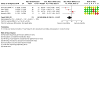
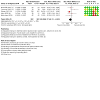

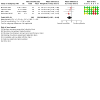
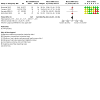
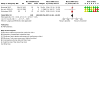
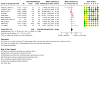
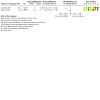
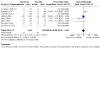
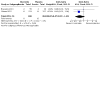
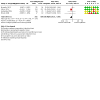
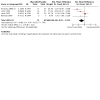
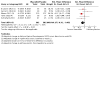
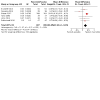
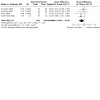
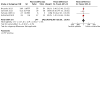
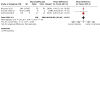
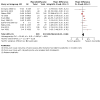
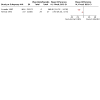
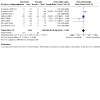
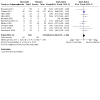
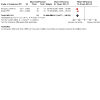
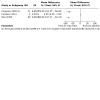
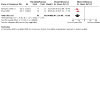
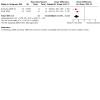
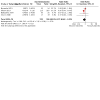



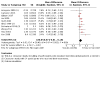
Update of
-
Macrolides for chronic asthma.Cochrane Database Syst Rev. 2015 Sep 15;(9):CD002997. doi: 10.1002/14651858.CD002997.pub4. Cochrane Database Syst Rev. 2015. Update in: Cochrane Database Syst Rev. 2021 Nov 22;11:CD002997. doi: 10.1002/14651858.CD002997.pub5. PMID: 26371536 Updated.
References
References to studies included in this review
Amayasu 2000 {published data only}
-
- Amayasu H, Yashida S, Ebana S, Yamamoto Y, Nishikawa T, Shoji T, et al. Clarithromycin suppress bronchial hyperresponsiveness associated with eosinophilic inflammation in patients with asthma. Annals of Allergy, Asthma and Immunology 2000;84(6):594-8. - PubMed
Belotserkovskaya 2007 {published and unpublished data}
-
- Belotserkovskaya Y, Sinopalnikov A. Open-trial randomized comparative trial of the efficacy of the azithromycin in the 8 week treatment of mild to moderate asthma. European Respiratory Journal 2007;30(Suppl 51):358s.
Black 2001 {published data only}
-
- Black P, Jenkins CR, Scicchitano R, Blasi F, Allegra L, Mills G, et al. Randomised, controlled trial of roxithromycin for the treatment of asthma in subjects with serological evidence of infection with Chlamydia pneumoniae. American Journal of Respiratory and Critical Care Medicine 2001;164(4):536-41. - PubMed
Brusselle 2013 {published and unpublished data}
-
- Brusselle GG, Vanderstichele C, Jordens P, Deman R, Slabbynck H, Ringoet V, et al. Azithromycin for prevention of exacerbations in severe asthma (AZISAST): a multicentre randomised double-blind placebo-controlled trial. Thorax 2013;68(4):322-9. - PubMed
Cameron 2013 {published data only}
Gibson 2017 {published and unpublished data}
-
- ACTRN12609000197235. The AMAZES study: Asthma and macrolides: the Azithromycin Efficacy and Safety Study [A large-scale, multicentre, double-blind, placebo controlled randomised trial to compare the efficacy (and safety) of the addition of oral low dose azithromycin for 48 weeks with fixed dose maintenance therapy on the incidence of asthma exacerbations and clinical asthma status in people with persistent asthma]. ictrptest.azurewebsites.net/Trial2.aspx?TrialID=ACTRN12609000197235 (first received 20 April 2009).
-
- Gibson PG, Yang IA, Upham JW, Reynolds PN, Hidge S, James AL, et al. Azithromycin reduces exacerbations in adults with persistent symptomatic eosinophilic asthma. American Journal of Respiratory and Critical Care Medicine 2017;195:A4679.
-
- Gibson PG, Yang IA, Upham PN, Hodge S, James AL, Jenkins C, et al. Effect of azithromycin on asthma exacerbations and quality of life in adults with persistent uncontrolled asthma (AMAZES): a randomised, double-blind, placebo-controlled trial. Lancet 2017;390(10095):659-68. - PubMed
Hahn 2006 {published and unpublished data}
Hahn 2012 {published and unpublished data}
-
- Hahn D, Grasmick M, Hetzel S. Pragmatic controlled trial of azithromycin for asthma in adults. European Respiratory Journal 2011;38:322s.
-
- Hahn DL, Grasmick M, Hetzel S, Yale S. Azithromycin for bronchial asthma in adults: an effectiveness trial. Journal of the American Board of Family Medicine 2012;25(4):442-59. - PubMed
He 2009 {published data only}
-
- He J, Zhu N, Chen XD. Clinical impacts of azithromycin on lung function and cytokines for asthmatic patients. Fudan University Journal of Medical Science 2009;36(6):719-22.
Kamada 1993 {published data only}
-
- Kamada AK, Hill MR, Iklé DN, Brenner AM, Szefler SJ. Efficacy and safety of low-dose troleandomycin therapy in children with severe, steroid-requiring asthma. Journal of Allergy and Clinical Immunology 1993;91(4):873-82. - PubMed
Kapoor 2010 {published and unpublished data}
-
- Kapoor S, Brashier B, Udupa A, Pawar R, Kodgule R, Limaye S, et al. Therapeutic effect of low dose roxithromycin in chronic stable mild-to-moderate asthma. European Respiratory Journal 2010;36(suppl 54):P1176.
Kostadima 2004 {published data only}
-
- Kostadima E, Tsiodras S, Alexopoulos EI, Kaditis AG, Mavrou I, Georgatou N, et al. Clarithromycin reduces the severity of bronchial hyperresponsiveness in patients with asthma. European Respiratory Journal 2004;23(5):714-7. - PubMed
Kraft 2002 {published data only}
-
- Kraft M, Cassell GH, Pak J, Martin RJ. Mycoplasma pneumoniae and Chlamydia pneumoniae in asthma: effect of clarithromycin. Chest 2002;121(6):1782-8. - PubMed
Nelson 1993 {published data only}
-
- Nelson HS, Hamilos DL, Corsello PR, Levesque NV, Buchmeier AD, Bucker BL. A double-blind study of troleandomycin and methylprednisolone in asthmatic subjects who require daily corticosteroids. American Review of Respiratory Disease 1993;147(2):398-404. - PubMed
Piacentini 2007 {published and unpublished data}
-
- Piacentini GL, Peroni DG, Bodini A, Pigozzi R, Costella S, Loiacono A, et al. Azithromycin reduces bronchial hyperresponsiveness and neutrophilic airway inflammation in asthmatic children: a preliminary report. Allergy and Asthma Proceedings 2007;28(2):194-8. - PubMed
Shoji 1999 {published data only}
-
- Shoji T, Yoshida S, Sakamoto H, Hasegawa H, Nakagawa H, Amayasu H. Anti-inflammatory effect of roxithromycin in patients with aspirin-intolerant asthma. Clinical and Experimental Allergy 1999;29(7):950-6. - PubMed
Simpson 2008 {published and unpublished data}
-
- Simpson JL, Powell H, Boyle MJ, Scott RJ, Gibson PG. Anti-inflammatory effects of clarithromycin in refractory non-eosinophilic asthma. American Thoracic Society International Conference; 2007 May 18-23; San Francisco (CA).
-
- Simpson JL, Powell H, Boyle MJ, Scott RJ, Gibson PG. Anti-inflammatory effects of clarithromycin in refractory non-eosinophilic asthma. Respirology 2007;12:A120.
-
- Simpson JL, Powell H, Boyle MJ, Scott RJ, Gibson PG. Anti-inflammatory effects of clarithromycin in refractory non-eosinophilic asthma. Thoracic Society of Australia and New Zealand Annual Scientific Meeting; 2007 Mar 25-28; Auckland:Abstract TO13.
-
- Simpson JL, Powell H, Boyle MJ, Scott RJ, Gibson PG. Clarithromycin targets neutrophilic airway inflammation in refractory asthma. American Journal of Respiratory and Critical Care Medicine 2008;177(2):148-55. - PubMed
Strunk 2008 {published and unpublished data}
Sutherland 2010 {published data only}
Wan 2016 {published and unpublished data}
Wang 2012 {published data only}
-
- Wang Y, Zhang SL, Qu Y. Effect of clarithromycin on non-eosinophilic refractory asthma [克拉霉素治疗非嗜酸粒细胞型难治性哮喘的疗效分析]. Journal of Clinical Pulmonary Medicine 2012;17(11):1948-51.
Wang 2014 {published data only}
-
- Wang T, Pei FY, Song XP, Wang Q. Clinical impacts of low-dose azithromycin on lung function and fraction of exhaled nitric oxide concentration in bronchial asthma [小剂量阿奇霉素对支气管哮喘患者呼出气NO浓度及肺功能的影响]. Medical Innovation China 2014;11(9):122-4.
Xiao 2013 {published data only}
-
- Xiao KA. The study on effect of roxithromycin combined with budesonide in therapy in patients with asthma. Guide of Chinese Medicine 2013;11:119-20.
Yan 2008 {published data only}
-
- Yan XQ, Wu LQ, Lin J, Xiao XD, Dai YR. Clinical study on efficacy of roxithromycin combined with inhaled budesonide dry powder inhalation on asthma [罗红霉素与布地奈德干粉吸入剂联用治疗哮喘的临床研究]. Chinese Journal of Pharmacology and Therapeutics 2008;13(2):184-7.
Zhang 2013 {published data only}
-
- Zhang LY, Qian Q. Clinical effect of azithromycin combined with Seretide for asthma. Strait Pharmaceutical Journal 2013;25:159-60.
References to studies excluded from this review
Andrade 1983 {published data only}
-
- Andrade WP, Renard RL, Nelson HS. The effect of troleandomycin and methylprednisolone alone and in combination on bronchial sensitivity to methacholine. Annals of Allergy 1983;51(5):515-7. - PubMed
Anon 2009 {published data only}
-
- Anonymous. Bronchial asthma – clarithromycin depresses neutrophil inflammation [Asthma bronchiale – clarithromycin senkt die neutrophile Entzündung]. Pneumologie 2009;63(1):2. - PubMed
Bacharier 2015 {published data only}
-
- Bacharier LB, Guilbert TW, Mauger DT, Boehmer S, Beigelman A, Fitzpatrick AM, et al. Early administration of azithromycin and prevention of severe lower respiratory tract illnesses in preschool children with a history of such illnesses: a randomized clinical trial. JAMA 2015;19:2034-44. - PMC - PubMed
Baigelman 2015 {published data only}
-
- Beigelman A, Isaacson-Schmid M, Sajol G, Baty J, Rodriguez OM, Leege E, et al. Randomized trial to evaluate azithromycin's effects on serum and upper airway IL-8 levels and recurrent wheezing in infants with respiratory syncytial virus bronchiolitis. Journal of Allergy and Clinical Immunology 2015;135(5):1171-78e1. - PMC - PubMed
Ball 1990 {published data only}
-
- Ball BD, Hill MR, Brenner M, Sanks R, Szefler SJ. Effect of low-dose troleandromycin on glucocorticoid pharmacokinetics and airway hyperresponsiveness in severely asthmatic children. Annals of Allergy 1990;65(1):37-45. - PubMed
Cogo 1994 {published data only}
-
- Cogo R, Caiazzo G, De Luca P, Boddi V, De Luca M, Casini A. Effect of miocamycin and amoxicillin/clavulonate on total serum immunoglobulin E levels in patients with infectious exacerbations of allergic asthma: a crossover trial. Current Therapeutic Research 1994;55(2):184-98.
D'Azevedo Silveira 2016 {published data only}5639760
-
- D'Azevedo Silveira V, Roza CA, Luisi F, Pitrez PM, Stein RT, Pinto LA. Azithromycin therapy in infants with bronchiolitis reduces recurrent wheezing 3 months after hospitalization: a randomized, placebo-controlled trial. Pediatric Pulmonology 2016;S9:59.
Ebling 1984 {published data only}
-
- Ebling WF, Szefler SJ, WJ Jusko. Analysis of cortisol, methylprednisolone, and methylprednisolone hemisuccinate. Absence of effects of troleandomycin on ester hydrolysis. Journal of Chromatography 1984;305(2):271-80. - PubMed
Feldman 1997 {published data only}
-
- Feldman C, Anderson R, Theron AJ, Ramafi G, Cole PJ, Wilson R. Roxithromycin, clarithromycin, and azithromycin attenuate the injurious effects of bioactive phospholipids on human respiratory epithelium in vitro. Inflammation 1997;21(6):655-65. - PubMed
Gong 2016 {published data only}5639762
-
- Gong L, Xu L, Diao M, Guo F, Bian FF, Min J, et al. Clinical effect of treating secondary asthma attacks of children Mycoplasma pneumoniae with combined therapy of montelukast and azithromycin. European Review for Medical and Pharmacological Sciences 2016;20(24):5256-60. - PubMed
Gotfried 2004 {published data only}
Hodgson 2016 {published data only}
Hueston 1991 {published data only}
-
- Hueston WJ. A comparison of albuterol and erythromycin for the treatment of acute bronchitis. Journal of Family Practice 1991;33:476-80. - PubMed
Itkin 1970 {published data only}
-
- Itkin IH, Menzel ML. The use of macrolide antibiotic substances in the treatment of asthma. Journal of Allergy 1970;45(3):146-62. - PubMed
Johnston 2016 {published data only}
-
- Johnston SL, Szigeti M, Cross M, Brightling C, Chaudhuri R, Harrison T, et al. Azithromycin for acute exacerbations of asthma: the AZALEA randomized clinical trial. JAMA Internal Medicine 2016;176(11):1630-7. - PubMed
Kaplan 1958 {published data only}
-
- Kaplan MA, Goldin M. The use of triacetyloleandomycin in chronic infectious asthma. Antibiotics Annual 1958;6:273-6. - PubMed
Koh 1997 {published data only}
-
- Koh YY, Lee MH, Sun YH, Sung KW, Chae JH. Effect of roxithromycin on airway responsiveness in children with bronchiectasis: a double-blind, placebo-controlled study. European Respiratory Journal 1997;10(5):994-9. - PubMed
Koutsoubari 2012 {published data only}
-
- Koutsoubari I, Papaevangelou V, Konstantinou GN, Makrinioti H, Xepapadaki P, Kafetzis D, et al. Effect of clarithromycin on acute asthma exacerbations in children: an open randomized study. Pediatric Allergy and Immunology 2012;23(4):385-90. - PubMed
Lee 1998 {published data only}
-
- Lee HB, Lee YC, Rhee YK. Effects of erythromycin and new macrolides on the serum theophylline level and clearance. Tuberculosis and Respiratory Diseases 1998;3:546-52.
Mandhane 2017 {published data only}
-
- Mandhane PJ, Paredes Zambrano de Silbernagel P, Aung YN, Williamson J, Lee BE, Spier S, et al. Treatment of preschool children presenting to the emergency department with wheeze with azithromycin: a placebo-controlled randomized trial. PloS One 2017;12(8):e0182411. [DOI: 10.1371/journal.pone.0182411] - DOI - PMC - PubMed
Oldach 2015 {published data only}5639703
-
- Oldach D, Luna C, Szabo P, Mitha I, Tanaseanu C, Doreski A, et al. Oral solithromycin has a favorable profile versus oral moxifloxacin for treatment of adult community-acquired pneumonia (CABP) in elderly patients and those with COPD or asthma. European Respiratory Journal 2015;Suppl 59:PA2655.
Ram 2016 {published data only}
-
- Ram B, Aggarwal AN, Dhooria S, Sehgal IS, Garg M, Behera D, et al. A pilot RCT of nebulized amphotericin for maintenance of remission in patients with allergic bronchopulmonary aspergillosis. Journal of Asthma 2016;5:517-24. - PubMed
Spector 1974 {published data only}
-
- Spector SL, Katz FH, Farr RS. Troleandomycin: effectiveness in steroid-dependent asthma and bronchitis. Journal of Allergy and Clinical Immunology 1974;54(6):367-79.
Stokholm 2016 {published data only}
Szefler 1980 {published data only}
-
- Szefler SJ, Rose JQ, Ellis EF, Spector SL, Green AW, Jusko WJ. The effect of troleandomycin on methylprednisolone elimination. Journal of Allergy and Clinical Immunology 1980;66(6):447-51. - PubMed
Szefler 1982a {published data only}
-
- Szefler SJ, Brenner M, Jusko WJ, Spector SL, Flesher KA, Ellis EF. Dose- and time-related effect of troleandomycin on methylprednisolone elimination. Clinical Pharmacology and Therapeutics 1982;32(2):166-71. - PubMed
Szefler 1982b {published data only}
-
- Szefler SJ, Ellis EF, Brenner M, Rose JQ, Spector SL, Yurchak AM, et al. Steroid-specific and anticonvulsant interaction aspects of troleandomycin-steroid therapy. Journal of Allergy and Clinical Immunology 1982;69(5):455-60. - PubMed
Takamura 2001 {published data only}
-
- Takamura M, Odashima Y, Iikura H. Continuous low-dosage macrolide therapy in children with bronchial asthma. Japanese Journal of Antibiotics 2001;54(Suppl C):9-11. - PubMed
Wald 1986 {published data only}
-
- Wald JA, Friedman BF, Farr RS. An improved protocol for the use of troleandomycin (TAO) in the treatment of steroid-requiring asthma. Journal of Allergy and Clinical Immunology 1986;78(1 Pt 1):36-43. - PubMed
Weinberger 1977 {published data only}
-
- Weinberger MW, Hudgel D, Spector S, Chidsey C. Inhibition of theophylline clearance by troleandomycin. Journal of Allergy and Clinical Immunology 1977;59(3):228-31. - PubMed
Zeiger 1980 {published data only}
-
- Zeiger RS, Schatz M, Sperling W, Simon RA, Stevenson DD. Efficacy of troleandomycin in outpatients with severe, corticosteroid-dependent asthma. Journal of Allergy and Clinical Immunology 1980;66(6):438-46. - PubMed
References to ongoing studies
NCT02517099 {published data only}
-
- NCT02517099. Preschool wheeze: Inflammation/Infection Guided Management (PrIGMa) [Use of pathological phenotype to determine optimal management for moderate to severe preschool wheeze]. www.clinicaltrials.gov/ct2/show/NCT02517099 (first received 6 August 2015).
Additional references
Adachi 1996
-
- Adachi T, Motojima S, Hirata A. Eosinophil apoptosis caused by theophylline, glucocorticoids, and macrolides after stimulation with IL-5. Journal of Allergy and Clinical Immunology 1996;98(6 Pt 2):S207-15. - PubMed
Alvarez‐Elcoro 1999
-
- Alvarez-Elcoro S, Enzler MJ. The macrolides: erythromycin, clarithromycin, and azithromycin. Mayo Clinic Proceedings 1999;74(6):613-34. - PubMed
ATS 1987
-
- ATS Scientific Assembly on Clinical Problems. Standards for the diagnosis and care of patients with chronic obstructive pulmonary disease (COPD) and asthma. American Review of Respiratory Disease 1987;136(1):225-44. - PubMed
Black 1997
-
- Black PN. Anti-inflammatory effects of macrolide antibiotics. European Respiratory Journal 1997;10:971-2. - PubMed
Black 2000
-
- Black PN, Scicchitano R, Jenkins CR, Blasi F, Allegra L, Wlodarczyk J, et al. Serological evidence of infection with Chlamidia pneumoniae is related to the severity of asthma. European Respiratory Journal 2000;15(2):254-9. - PubMed
Brill 2015
BTS 2020
-
- Smith D, Du Rand I, Addy CL, Collyns T, Hart SP, Mitchelmore PJ, et al. British Thoracic Society guideline for the use of long-term macrolides in adults with respiratory disease. Thorax 2020;75:370-404. - PubMed
Cai 2011
-
- Cai Y, Chai D, Wang R, Bai N, Liang BB, Liu Y. Effectiveness and safety of macrolides in cystic fibrosis patients: a meta-analysis and systematic review. Journal of Antimicrobial Chemotherapy 2011;66(5):968-78. - PubMed
Castro 2018
-
- Castro M, Corren J, Pavord ID, Maspero J, Wenzel S, Rabe KF, et al. Dupilumab efficacy and safety in moderate-to-severe uncontrolled asthma. New England Journal of Medicine 2018;378(26):2486-96. - PubMed
CTCAE 2020
-
- National Cancer Institute. Common Terminology Criteria for Adverse Events v.6. ctep.cancer.gov/protocoldevelopment/electronic_applications/ctc.htm (accessed prior to 14 November 2021).
Enright 2004
Essilfie 2015
-
- Essilfie AT, Horvat JC, Kim RY, Mayall JR, Pinkerton JW, Beckett EL, et al. Macrolide therapy suppresses key features of experimental steroid-sensitive and steroid-insensitive asthma. Thorax 2015;70:458-67. - PubMed
Fan 2015
-
- Fan H. Macrolides for asthma [personal communication]. Email to: Kayleigh Kew 30 July 2015.
Farne 2017
Gencay 2001
-
- Gencay M, Rudiger JJ, Tamm M, Solér M, Perruchoud AP, Roth M. Increased frequency of Chlamydia pneumoniae antibodies in patients with asthma. American Journal of Respiratory and Critical Care Medicine 2001;163(5):1097-100. - PubMed
Gibson 2019
GINA 1995
-
- Global Initiative for Asthma. Global strategy for asthma management and prevention (1995 version). ginasthma.org/wp-content/uploads/2019/01/1995-GINA.pdf (accessed 8 April 2015).
GINA 2002
-
- Global Initiative for Asthma. Global strategy for asthma management and prevention (2002 version). ginasthma.org/wp-content/uploads/2019/01/2002-GINA.pdf (accessed 8 April 2015).
GINA 2007
-
- Global Initiative for Asthma. Global strategy for asthma management and prevention (2007 update). ginasthma.org/wp-content/uploads/2019/01/2007-GINA.pdf (accessed 8 April 2015).
GINA 2010
-
- Global Initiative for Asthma. Global strategy for asthma management and prevention (update 2010). ginasthma.org/wp-content/uploads/2019/01/2010-GINA.pdf (accessed 8 April 2015).
GINA 2014
-
- Global Initiative for Asthma. Global strategy for asthma management and prevention (update 2014). ginasthma.org/wp-content/uploads/2019/01/2014-GINA.pdf (accessed 8 April 2015).
GINA 2020
-
- Global Initiative for Asthma. Global strategy for asthma management and prevention 2020. ginasthma.org/wp-content/uploads/2020/04/GINA-2020-full-report_-final-_w... (accessed prior to 20 May 2021).
GINA 2021
-
- Global Initiative for Asthma. Global strategy for asthma management and prevention 2021. ginasthma.org/wp-content/uploads/2021/05/GINA-Main-Report-2021-V2-WMS.pdf (accessed prior to 14 November 2021.
GRADEpro GDT [Computer program]
-
- GRADEpro GDT. Hamilton (ON): McMaster University (developed by Evidence Prime). Available at gradepro.org (accessed 27 June 2021).
Hansbro 2014
-
- Hansbro PM, Starkey MR, Mattes J, Horvat JC. Pulmonary immunity during respiratory infections in early life and the development of severe asthma. Annals of the American Thoracic Society 2014;11(Suppl 5):S297-302. - PubMed
Higgins 2011
-
- Higgins JP, Green S, editor(s). Cochrane Handbook for Systematic Reviews of Interventions Version 5.1 (updated March 2011). The Cochrane Collaboration, 2011. Available from training.cochrane.org/handbook/archive/v5.1/.
Hiles 2019
Hinks 2021
Jadad 1996
-
- Jadad A, Moore RA, Carroll D, Jenkson C, Reynolds JM, Gavaghan DJ, et al. Assessing the quality of reports of randomized clinical trials: is blinding necessary? Controlled Clinical Trials 1996;17(1):1-12. - PubMed
Juniper 1994
-
- Juniper EF, Guyatt GH, Willan A, Griffith LE. Determining a minimal important change in a disease-specific quality of life questionnaire. Journal of Clinical Epidemiology 1994;47(1):81-7. - PubMed
Juniper 2005
-
- Juniper EF, Svensson K, Mork AC, Stahl E. Measurement properties and interpretation of three shortened versions of the asthma control questionnaire. Respiratory Medicine 2005;99:553-8. - PubMed
Kawasaki 1998
Konno 1994
-
- Konno S, Asano K, Kurokawa M, Ikeda K, Okamoto K, Adachi M. Antiasthmatic activity of a macrolide antibiotic, roxithromycin: analysis of possible mechanisms in vitro and in vivo. International Archives of Allergy and Immunology 1994;105(3):308-16. - PubMed
Koyama 1998
-
- Koyama T, Takizawa H, Kawasaki S, Takami K, Otoshi T, Ito K. Effects of various drugs on IL-8 production by eosinophils collected from patients with allergic inflammation. Japanese Journal of Antibiotics 1998;51(Suppl A):131-3. - PubMed
Kraft 1998
-
- Kraft M, Cassell GH, Henson JE, Watson H, Williamson J, Marmion BP, et al. Detection of Mycoplasma pneumoniae in the airways of adults with chronic asthma. American Journal of Respiratory and Critical Care Medicine 1998;158(3):998-1001. - PubMed
Malhotra‐Kumar 2007
-
- Malhotra-Kumar S, Lammens C, Coenen S, Herck K, Goossens H. Effect of azithromycin and clarithromycin therapy on pharyngeal carriage of macrolide-resistant streptococci in healthy volunteers: a randomised, double-blind, placebo-controlled study. Lancet 2007;369(9560):482-90. - PubMed
Moher 2009
Normansell 2014
Olin 2014
-
- Olin JT, Wechsler ME. Asthma: pathogenesis and novel drugs for treatment. BMJ 2014;349:g5517. - PubMed
Pasternack 2005
-
- Pasternack R, Huhtala H, Karjalainen J. Chlamydophila (Chlamydia) pneumoniae serology and asthma in adults: a longitudinal analysis. Journal of Allergy and Clinical Immunology 2005;116(5):1123-8. - PubMed
Rabe 2018
-
- Rabe KF, Nair P, Brusselle G, Maspero JF, Castro M, Sher L, et al. Efficacy and safety of dupilumab in glucocorticoid-dependent severe asthma. New England Journal of Medicine 2018;378(26):2475-85. - PubMed
Reiter 2013
-
- Reiter J, Demirel N, Mendy A, Gasana J, Vieira ER, Colin AA, et al. Macrolides for the long-term management of asthma – a meta-analysis of randomized clinical trials. Allergy 2013;68(8):1040-9. - PubMed
Review Manager 2014 [Computer program]
-
- Review Manager (RevMan). Version 5.3. Copenhagen: The Nordic Cochrane Centre, The Cochrane Collaboration, 2014.
Schünemann 2021
-
- Schünemann HJ, Higgins JP, Vist GE, Glasziou P, Akl EA, Skoetz N, et al. Chapter 14: Completing 'Summary of findings' tables and grading the certainty of the evidence. In: Higgins JP, Thomas J, Chandler J, Cumpston M, Li T, Page MJ, et al, editor(s). In: Cochrane Handbook for Systematic Reviews of Interventions version 6.2 (updated February 2021). Cochrane, 2021. Available from training.cochrane.org/handbook.
Spagnolo 2013
-
- Spagnolo P, Fabbri LM, Bush A. Long-term macrolide treatment for chronic respiratory disease. European Respiratory Journal 2013;42(1):239-51. - PubMed
Tong 2015
-
- Tong X, Guo T, Liu S, Peng S, Yan S, Yang X, et al. Macrolide antibiotics for treatment of asthma in adults: a meta-analysis of 18 randomized controlled clinical studies. Pulmonary Pharmacology and Therapeutics 2015;31:99-108. - PubMed
Wang 2019
References to other published versions of this review
Kew 2015
Richeldi 2002
Publication types
MeSH terms
Substances
Associated data
LinkOut - more resources
Full Text Sources
Medical
Research Materials
Miscellaneous

